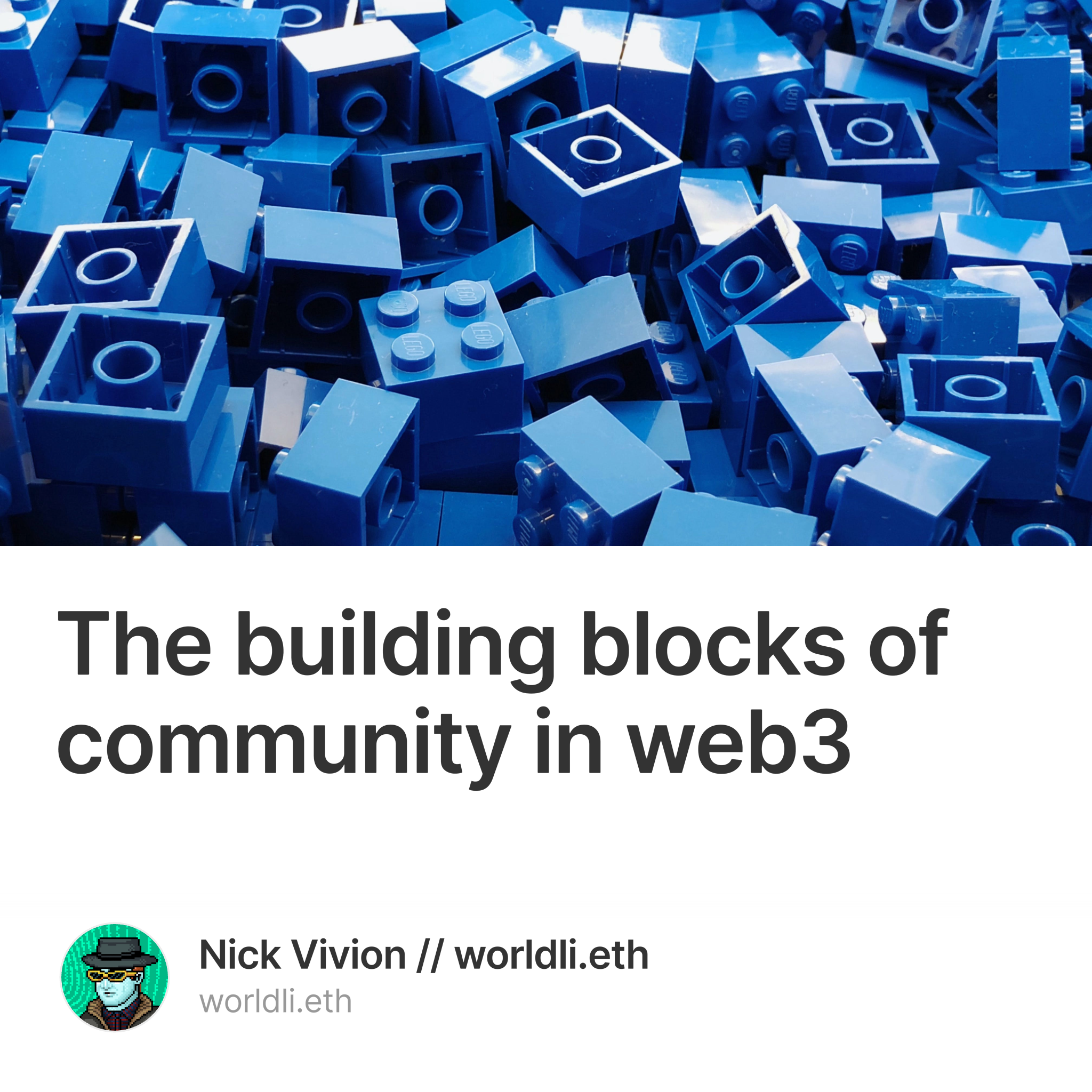There are no shortcuts to building community in web3. It’s a hands-on, 24/7 commitment.
Whereas web2 made it easy to target specific segments and anonymously inundate them with ‘relevant’ ads, web3 requires a steadfast commitment to community.
And yes, that absolutely can be exhausting and taxing, for even the most engaged and passionate community builders. So that’s why it’s important to set the proper foundation for your web3 community.
By providing structure and density, a strong foundation makes the process of building, engaging and growing a community easier to manage over the long-term.
These building blocks are essential not only to support a thriving community — but to also to support the community builders behind the scenes. Here’s how these building blocks function to drive success in web3 communities.
Credibility — Attracts people
First and foremost, a community needs people. It doesn’t need many people, but it at least needs a few. And when it comes to web3, a community also needs to have defining principles that attract the right people to the project.
There are many reasons that people join projects. For some, it’s the product itself, whether it’s ownership of an NFT, a shared passion or even mutual admiration for a public figure associated with the project. In each of these cases, what unites the community is its purpose, the community’s reason for being.
The thread here is credibility: there’s a reason to believe in the community’s purpose, whether financial, creative, professional or social. Credibility is just another word for social proof: a credible source has sliced off a part of the world and is inviting me to join.
And, when that purpose inspires people to contribute time, energy and effort, then it’s a mission-driven community that has established clear credibility.
Consistency — Establishes trust
Once you have credibility, the next building block is consistency.
Consider a community’s earliest members, the early adopters. These people have opted into the community based on the credibility of the project founders, the community builders and, of course, fellow members. But if interactions become inconsistent, it causes big problems for long-term retention.
Humans are hard-wired to avoid confusing, difficult or challenging situations. So why would community contributors stick around if the vibe falters because of inconsistent interactions, infrequent communications or ever-shifting tone? They’ll simply leave, taking their contributions elsewhere.
In many ways this is a zero-sum game — at any given moment, there are only so many top contributors across all web3 communities. One community’s loss is often another’s gain. This is why understanding your community’s top contributors is vitally important: community builders need to keep their community MVPs engaged and retain them for the long-term.
Trust — Creates culture
Once you’ve established credibility and proven consistency, you earn trust. And trust creates culture; it’s the bond that cements relationships between people, turning strangers into friends.
Trust also encourages contributions. It makes people feel ownership of, and pride for, the community. That’s the kind of emotion that creates momentum for a community in its early days. Once trust is established, both between project leaders and community members and between members themselves, a community is on a much more solid footing for healthy growth.
The saying, “Culture is what happens when you’re in the room,” holds truer than ever in web3 community. Establish trust, nurture a positive culture and allow your community to blossom organically.
Humility — Fosters goodwill
As culture grows from a seedling to a tree, it gains many roots— and can encourage egos to flourish alongside the growing community.
Founders, community leaders and mods can easily lose touch, embarking on power trips that ultimately deflate the very culture that gave them life in the first place. This is where humility slides into place as the building block of resilience.
When community leaders remain humble, whether in the face of adversity, criticism or unexpected challenges, they foster goodwill.
People notice how leaders perform under adverse conditions and are quick to judge whether these leaders have the community’s best interests at heart. When they feel jilted, they leave. But when they feel heard and understood, it fosters goodwill that further builds culture. That’s because humility extends to the community as a whole; when leaders lead by example, it filters down into how the community interacts with each other.
Humor — Translates into loyalty
The reality of the bear market is that community is, to some extent, a zero-sum game. When there aren’t as many new people coming into the space, it’s even more important to attract and retain top-quality community members that will contribute their time, energy and creativity to your community.
That’s why humor is especially important — it helps retain your best contributors by making the community fun. You want everyone to look forward to, and enjoy, their time spent in the community so they keep coming back; humor is a tactic to accomplish that goal.
Humor manifests in a variety of ways. From memes to on-boarding, comment responses and broader brand communications, each public touchpoint is an opportunity to nurture humor as a core community value.
Building community together
What it all comes down to is a “servant leader” mindset that puts the community at the center of each decision.
When used as a core value by community builders, this mindset encompasses all of the traits listed above to create a vibe that fully expresses the personality of the community.
When a community’s leaders fully understand the importance of remaining in service to the community itself, anything is possible.
After all, you can’t growth hack your way to a vibrant community. It’s curated conversation by conversation, relationship by relationship — and it’s that hard work that defines how the most successful web3 community builders approach their roles.
And, yes: these building blocks apply equally to web2 businesses looking to leverage the community-centric ethos of web3. A focus on community drives brand value, regardless of which web you’re building for.

